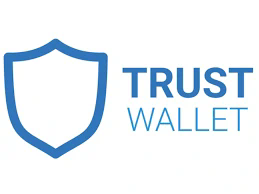Understanding Cryptocurrency Wallets: A Comprehensive Guide
### Introduction
Cryptocurrency has revolutionized the way we think about money and value exchange. At the heart of this digital financial ecosystem lies the cryptocurrency wallet, a critical component that allows users to store, send, and receive digital assets securely. With the ever-growing popularity of cryptocurrencies like Bitcoin, Ethereum, and countless altcoins, understanding the intricacies of cryptocurrency wallets is essential for anyone looking to engage with this technology. This article aims to provide a comprehensive overview of cryptocurrency wallets, delving deep into their types, functionalities, security considerations, and the evolution of wallet technologies.
### What is a Cryptocurrency Wallet?
A cryptocurrency wallet is a software or hardware application that enables users to interact with blockchain networks. Unlike traditional wallets that hold physical currency, cryptocurrency wallets do not store actual coins. Instead, they store the public and private keys required to access and manage a user’s digital assets on the blockchain. The public key can be shared with others to receive cryptocurrency, while the private key must be kept secret to authorize transactions and access funds.
### Types of Cryptocurrency Wallets

Cryptocurrency wallets can be broadly categorized into three main types: hot wallets, cold wallets, and hardware wallets. Each type serves different purposes and offers varying levels of security and convenience.
#### 1. Hot Wallets
Hot wallets are online wallets that are connected to the internet. They are easy to set up and use, making them ideal for beginners and day-to-day transactions. Hot wallets come in various forms:
– **Web Wallets**: These wallets are hosted on web platforms and can be accessed from any device with internet connectivity. Popular examples include Coinbase and Binance.
– **Mobile Wallets**: Smartphone applications that allow users to manage their cryptocurrencies on the go. Examples include Trust Wallet and MetaMask.
– **Desktop Wallets**: Software installed directly on a computer, offering more control over private keys compared to web wallets. Examples include Exodus and Electrum.
While hot wallets are convenient, they are more susceptible to hacks and phishing attempts due to their online nature. Users must employ robust security measures, such as two-factor authentication (2FA) and strong passwords, to mitigate risks.
#### 2. Cold Wallets
Cold wallets, in contrast, are not connected to the internet, making them significantly more secure against hacking and malware. They are often used for long-term storage of cryptocurrencies. Types of cold wallets include:
– **Paper Wallets**: A physical printout of a user’s public and private keys. While very secure if kept safe, physical damage or loss can result in total asset loss.
– **Hardware Wallets**: Devices specifically designed to store cryptocurrency offline. Examples include Ledger Nano S and Trezor. They provide a user-friendly interface for managing digital assets securely.
Cold wallets are ideal for those who wish to hold large amounts of cryptocurrency and do not require immediate access to their funds, as the process to access funds can be more cumbersome compared to hot wallets.
### Key Management in Cryptocurrency Wallets
The security of a cryptocurrency wallet hinges primarily on how well the private keys are managed. Users must understand key management to protect their assets effectively.
#### 1. Public and Private Keys
– **Public Key**: Similar to an account number, a public key is shared with others to receive cryptocurrencies. It is derived from the private key using cryptographic algorithms.
– **Private Key**: A secret code that allows the user to access and control the cryptocurrency associated with the public key. Losing this key means losing access to the funds.
#### 2. Seed Phrases
Many wallets generate a seed phrase (or recovery phrase), usually consisting of 12 to 24 words. This phrase allows users to recover their private keys if they lose access to their wallet. Keeping this seed phrase secure is crucial, as anyone with access to it can control the associated funds.
### Security Considerations
Security is paramount when dealing with cryptocurrency wallets. Here are some best practices to safeguard your assets:
1. **Use Strong Passwords**: Employ complex passwords and change them regularly. Consider using a password manager to generate and store them securely.
2. **Enable Two-Factor Authentication**: Whenever possible, enable 2FA for an added layer of security. This typically involves receiving a code on a secondary device.
3. **Keep Software Updated**: Regularly update wallet software to ensure you benefit from the latest security enhancements.
4. **Avoid Phishing Scams**: Be cautious of unsolicited emails or messages asking for personal information. Always verify the source before clicking on links or providing any information.
5. **Secure Backups**: Regularly back up your wallet data and ensure that the backups are stored securely, whether offline or encrypted.
### The Evolution of Cryptocurrency Wallets
Since the advent of Bitcoin in 2009, cryptocurrency wallets have evolved significantly in terms of functionality and security.
1. **Initial Developments**: The earliest wallets were simple text files containing private keys. As the cryptocurrency space matured, dedicated software wallets emerged, offering user-friendly interfaces and improved security features.
2. **The Rise of Mobile Wallets**: The proliferation of smartphones led to the emergence of mobile wallets, empowering users to manage their assets conveniently on the go.
3. **Hardware Wallet Advancements**: As concerns over security intensified, hardware wallets gained popularity. These devices have become more sophisticated, often supporting multiple cryptocurrencies and providing a simple user experience.
4. **Integration with Decentralized Finance (DeFi)**: The rise of DeFi prompted the development of wallets that support decentralized applications (dApps) and facilitate activities like lending, borrowing, and trading within blockchain ecosystems.
### The Future of Cryptocurrency Wallets
As technology continues to evolve, cryptocurrency wallets are expected to undergo several changes:
1. **Greater Interoperability**: Future wallets may allow seamless interaction with multiple blockchains, facilitating cross-chain transactions and enhancing user experience.
2. **Improved User Experience**: As the adoption of cryptocurrencies expands, wallet developers are likely to focus on simplifying user experience, making it accessible to non-technical users.
3. **Advanced Security Features**: Innovations in security, such as biometric authentication and multi-signature wallets, will likely become standard as the need for enhanced protection grows.
4. **Integration with Traditional Finance**: As cryptocurrency gains legitimacy, wallets may integrate more closely with traditional banking systems, offering users the ability to manage both fiat and digital currencies from a single interface.
### Conclusion

Cryptocurrency wallets are indispensable tools in the digital asset ecosystem, serving as the gateway for users to manage their cryptocurrencies securely. With the variety of wallet types available, understanding the nuances of each is essential for safeguarding assets. Adopting best security practices and staying informed about developments in wallet technology will empower users to engage confidently in the cryptocurrency landscape. As this space continues to evolve, the role of cryptocurrency wallets will remain crucial in shaping the future of digital finance.


